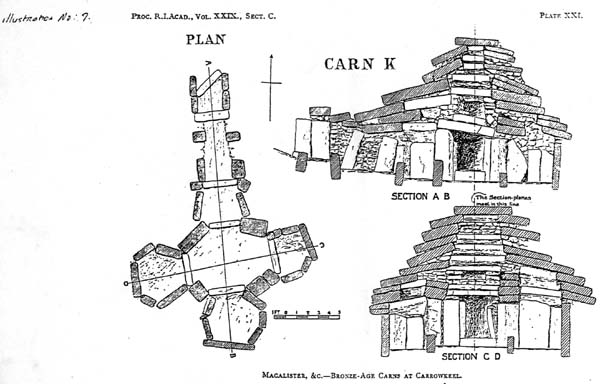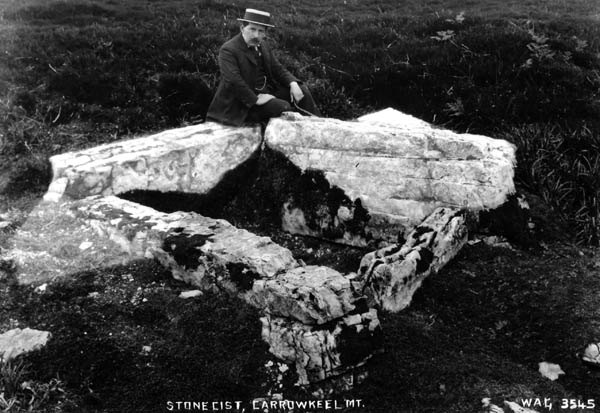


Macalister & Praeger's plan and section of Cairn K.
| Home
Page Guided Tour Map Carrowkeel Carrowkeel - page 2 Cairn A Cairns C & D Cairn E Cairn F Sections of Cairn F More sections from F Cairn G Section of Cairn G Astronomy at Cairn G More astronomy Cairn H Sections & plans Cairn K section Panorama from K Panorama page 2 Cairn L Cairns M & N Cairns O & P Doonaveeragh Treanmacmurtagh Sheecor Lough na Leibe Treanmor Cairnanweeleen The Caves of Kesh Kesh Corran Kesh Mythology Kesh Cairn . |
The passage and axis of the chamber is oriented to Queen Maeve's Cairn on the summit of Knocknarea, as are Cairns E, G and B. At about 15° west of north, the chamber is oriented much too far north for the sun to ever have shone into the chamber. It is also further north than the midwinter moonsets discussed on the Cairn G page, and may be oriented to the setting of a particular star. The main cairn at Fourknocks is oriented to the rising of this celestial event.
View from the end recess of Cairn K. The entrance is 7 meters away. Interestingly enough, the summits of both Maeve's Cairn and Cairn K are at the same altitude - a design fact that would greatly assist observation of the standstill. Also, Maeve's Cairn is the same distance from Cairn K as her palace at Rathcroghan to the south of here. The items found during the excavation of Cairn K in 1911 were typical of the finds in the other cairns: pieces of the Neolithic pottery, known as Carrowkeel Ware since that time; cremated human remains, chalk balls, antler pins and pendants. A few meters to the east of Cairn K is a small stone box or cist, originally covered with a stone slab, which was smashed by 'rabbit hunters' in the last century. It has been suggested that this structure had an esoteric purpose - to prepare candidates for initiation by interring them in the box for a night, perhaps on a festival or full moon. This type of ritual was practised by many ancient cultures, including the Egyptians. |

Praeger on the cist near Cairn K in 1911.
